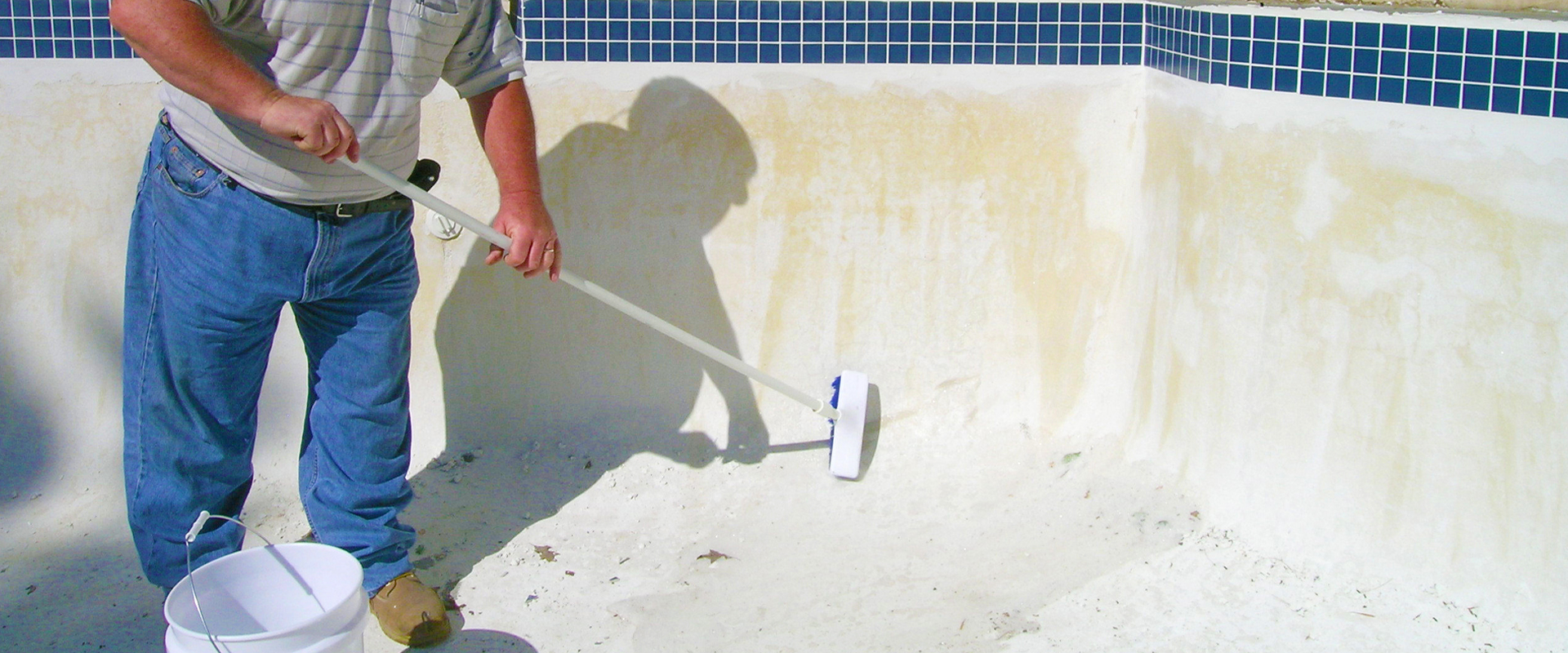Surface Preparation - Required
The most important aspect of coating a pool is surface preparation. Your new coating will not adhere to even the slightest oily residue such as suntan lotion, body oils, hair spray, algae or anything that comes between the pool surface and the new coating.
For an all-in-one solution use Olympic Prep Magic
It turns the traditional 3-step surface preparation into and easy 1-step process. Simply mix PREP MAGIC with water, clean your surface and then rinse. See the Prep Magic Bulletin for more information.
- VOC Compliant
- Low-Odor
- Biodegradable
- Water Rinse to Neutralize
- Cleans Pool Filters

Traditional Method of Pool Washing

Washing Your Pool
Washing Your Pool is Important to Remove Any Existing Oil Residue The best washing solution is OLYMPIC No. 910 Pool Washing Compound (tri-sodium phosphate) mixed with warm water. NEVER use a soap-type detergent. Soap products leave a soapy film on the surface which will result in poor coating adhesion.
How to Wash Your Pool
Mix eight ounces of pool washing compound or tri-sodium phosphate to each gallon of warm water. One gallon of this solution will wash approximately 200 square feet. Dip a long handled brush in this solution and firmly scrub the pool surface in approximately 10 foot sections. Rinse off the residue with clear water immediately after scrubbing. Be careful not to allow the pool washing solution to dry on the surface. Always scrub the walls first and the floor last. The next step is acid etching.

Acid Etching - for Bare Concrete and Plaster
Acid etching is required on bare masonry surfaces like concrete or plaster. It is also effective for removing chalky residue and hard mineral deposits on a previously coated pool. Acid washing opens millions of tiny pores which allow the subsequent coating to penetrate, thus creating a secure cohesive bond. Even on previously coated pools, we heartily recommend an acid wash.
NOTE: To prevent eye Injury, NEVER pour water into acid. ALWAYS pour acid into water and wear protective eyewear.
Mixing the Acid
Mix in a plastic bucket a ten percent solution of muriatic acid in water. Most muriatic acid is packaged at 20% or 30% strength. One gallon of 30% muriatic acid mixed with two gallons of water will yield three gallons of ten percent solution. Likewise, one gallon of 20% muriatic acid mixed with one gallon of water will yield two gallons of ten percent solution. One gallon of the ten percent solution is sufficient for etching 100 square feet of pool surface.
The Etching Procedure
Liberally brush the acid solution on the surface. The acid will bubble on the surface when applied. As soon as this bubbling ceases, rinse the solution off with clear water. The surface should feel like fine sandpaper when properly etched. Splash a small amount of water on the surface to see if it is sufficiently etched. If the water soaks in fairly quickly, the surface is properly etched. If the water stands on the surface, another etching will be required or switch to a stronger acid solution. It is of utmost importance that you wash the pool again after etching. The tri-sodium phosphate in the pool washing solution will neutralize all traces of acid left on the surface after etching. After this second washing, allow the pool to dry before coating. However, if you are using POXOPRIME II epoxy primer, you may proceed with priming the pool. POXOPRIME II is compatible with wet surfaces. Caution: Do not mix in a galvanized container.
Preparing Fiberglass Pools
To prepare a fiberglass pool for coating, sand the surface in straight lines with coarse sandpaper. (Do not use an orbital sander.) This sanding will create a mechanical bond for the epoxy coat. Once the fiberglass has been properly sanded, perform the pool washing procedure as described before. No acid washing is needed. Allow the surface to dry and you are ready to resurface your pool.